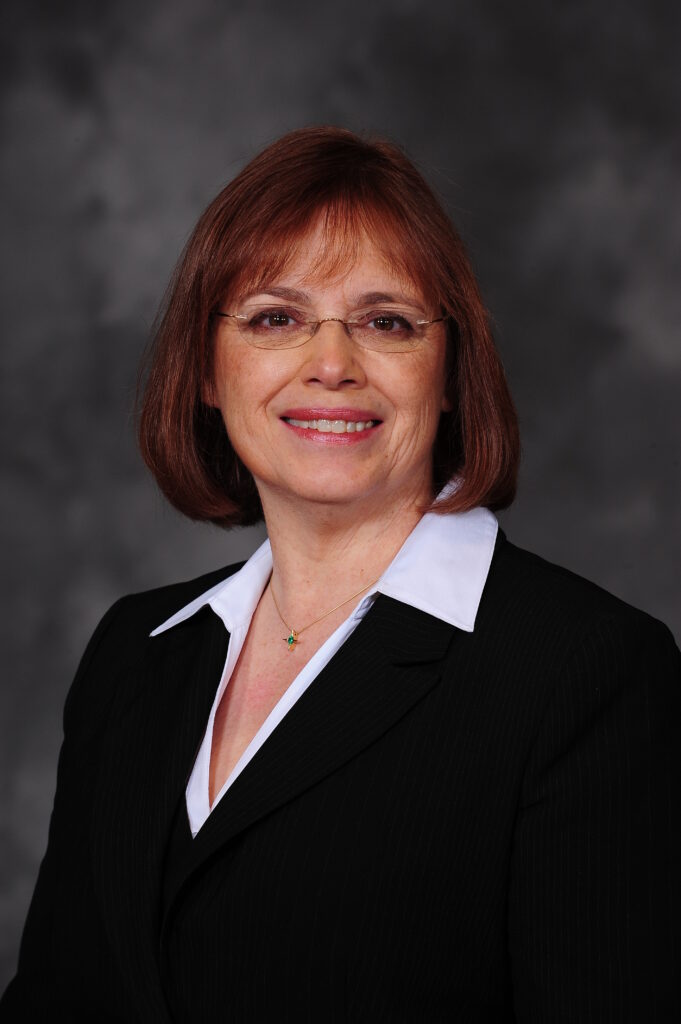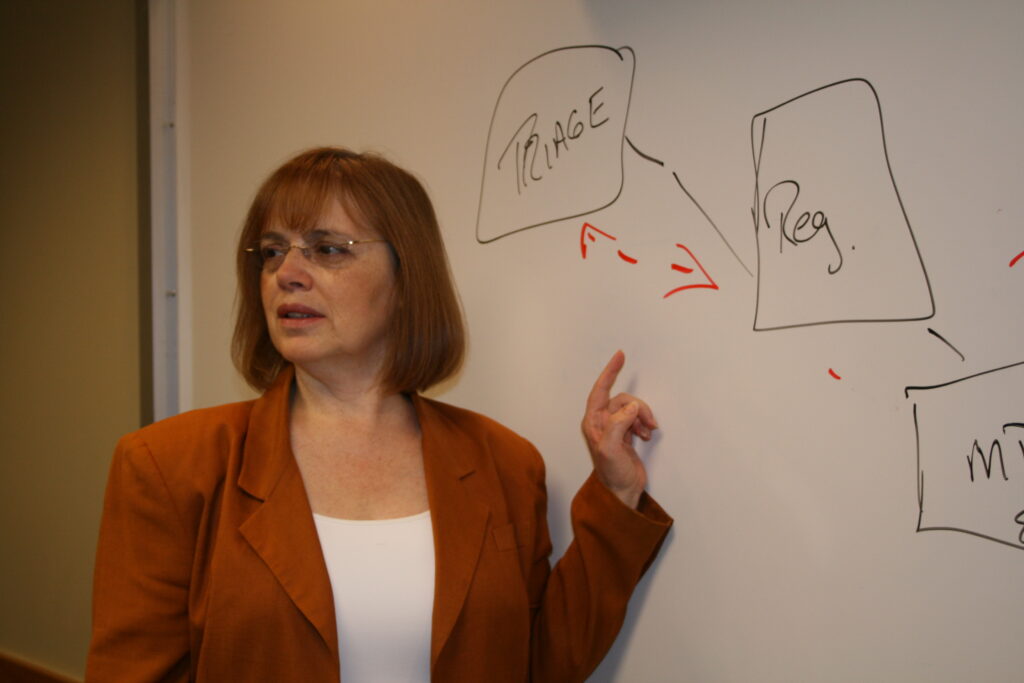


PARTNERS IN PHARMACY
Sandra Schneider,
MD, FACEP
“[Pharmacists] have a depth of knowledge that I think we don’t give them enough credit for.”
-Dr. Sandra Schneider
Dr. Sandra Schneider didn’t realize what her emergency department (ED) was missing — until a clinical pharmacist joined her team some 25 years ago.
At the time, Dr. Schneider was the founding chair of emergency medicine at the University of Rochester in Rochester, New York. One day, she got a call from the head of the pharmacy department, offering her an emergency pharmacist.
“I wasn’t sure what I would do with this person, but an old chief of mine once told me that you never turn down space, resources, or personnel. And so, I said sure.”
Dr. Schneider decided to let that new emergency pharmacist, Daniel Hays, do his thing. Before long, the ED was abuzz with Dan’s contributions: the advice he was giving, the problems he was solving, the money he was helping to save. Now the ED staff wanted a clinical pharmacist there 24/7.
“Dan changed my mind about what a pharmacist could do. He was amazing. He was never in his office; he was always on the floor. Here, we thought we were already in great shape, right? But he brought the icing on the cake — and I began to see this much bigger picture.”
Dr. Sandra Schneider didn’t realize what her emergency department (ED) was missing — until a clinical pharmacist joined her team some 25 years ago.”
Dr. Schneider says every patient case is a complex puzzle, and everyone contributes to solving it, from the housekeeper and security guard to the nurses, pharmacist, and physician.
“We can’t do our work without every member of the team. We can’t save lives. And pharmacists are so much a part of the ED team. They have a depth of knowledge that I think we don’t give them enough credit for.”
In an emergency, every second counts. Dr. Schneider appreciated having a dedicated medication expert by her side who understood disease states, knew the optimal therapies, and could recommend alternatives when faced with a patient allergy or potential drug interaction.
“We would be with a critically ill patient, and I would order something, and Dan would have the medications already laid out, ready to go, and hand it to me. He could anticipate what we were going to need, without me having to articulate it.”
Dan even saved Dr. Schneider from making a crucial medication error on 9/11. Not only was she the attending emergency physician on that fateful day, but she needed to be in constant contact with hospital leadership as events unfolded. Dr. Schneider has ties to both New York and Southwestern Pennsylvania, where she grew up and attended the University of Pittsburgh for undergraduate school, medical school, and residency. Like everyone, she was shaken and distracted.
Dan came to Dr. Schneider about a heparin order she’d just written. He’d caught a potentially devastating mistake.
And pharmacists are so much a part of the ED team. They have a depth of knowledge that I think we don’t give them enough credit for.”
“I looked down and he was right, I’d added an extra zero. And I knew that if I could make this mistake, anybody could. We had a group meeting, and I told everybody else that every single order gets double-checked. Dan saved me [and my patient] that day and probably many other lives, too.”
Dr. Schneider has treasured working with clinical pharmacists ever since, as she moved on to subsequent roles at the Hofstra/Northwell School of Medicine and the North Shore University Hospital and Long Island Jewish Medical Center (NS/LIJ). Now based in Dallas, Texas, she serves as the interim executive director for the American College of Emergency Physicians (ACEP).
Dr. Schneider reflects on more than 40 years in emergency medicine, the colleagues she worked alongside, and the difference they made together.
“I absolutely loved everything about being an emergency physician. There are still days that I really, really miss it: the excitement, the adrenaline, trying to solve that puzzle amid so many complexities. But at the end of the day, it was really about helping people. And pharmacists were an integral part of the critical care team.”
Generously sharing knowledge, making important split-second decisions, keeping patients safe: From this physician’s perspective, that’s what it means to be your pharmacist.
